
Guests
- Justin LevittCounsel in the Brennan Center’s Democracy Program at New York University. He works on election law and voting rights.
The Supreme Court heard arguments Wednesday on a case that many describe as the most important voting rights case since the decision that sealed the 2000 presidential election. It’s over a challenge to a 2005 law in Indiana that requires voters to show government-issued photo identification when voting. We speak with Justin Levitt, counsel at the Brennan Center for Justice at NYU Law School. [includes rush transcript]
Transcript
JUAN GONZALEZ: The Supreme Court heard arguments Wednesday on a case that many describe as the most important voting rights cases since the decision that sealed the 2000 presidential election. It’s over a challenge to a 2005 law in Indiana that requires voters to show government-issued photo identification when voting. The majority of the judges Wednesday seemed to be in favor of upholding the Indiana law. A final decision is expected in late June.
The law was backed by Republicans as a means to prevent voter fraud, but opponents of the law, including a wide array of civil rights groups, as well as the Democratic Party, say the law is excessively restrictive and unconstitutional. They argue that over 40,000 Indiana residents could be deprived of the right to vote because they do not have photo identification. Most of them are elderly, non-white and poor.
AMY GOODMAN: Justin Levitt is counsel at the Brennan Center for Justice at New York University Law School. The Brennan Center was among the many groups that filed briefs with the court, opposing the law. Justin Levitt focuses on voting rights and was at the Supreme Court hearing on Wednesday, joining us here in our firehouse studio.
Welcome, Justin. What happened yesterday? Tell us what this law is all about.
JUSTIN LEVITT: The law is one of a new series of proposals and one of the very few that got passed in Indiana in 2005 requiring certain types of photo identification to vote. The main controversy over the law is that it’s actually been shown to shut citizens out of the process, but it hasn’t been shown to correct any problem that Indiana, or any other state, really, had ever experienced. And the fight now is about not only thousands of Indiana voters who might or might not have the ability to vote in 2008 and beyond, but also about the standards for the rest of the country, how states decide which eligible citizens they’re able to shut out of the process and which eligible citizens they’re able to allow to vote.
JUAN GONZALEZ: And how does this compare to some of the other voter identification laws that have been passed, for instance, in Georgia and some of the other states around the country?
JUSTIN LEVITT: Indiana’s law is the strictest in the country. It requires certain types of government-issued photo ID with an expiration date. And part of the problems with this is not only that there are some segment of people who don’t have the ID, but that it’s very difficult to get the necessary ID if you don’t start out with the ID to begin with.
AMY GOODMAN: What’s the ID?
JUSTIN LEVITT: The ID is — it can be either a state-issued driver’s license, it can be a US passport, anything issued by the federal government or by the state of Indiana itself that is current with an expiration and a photo on it.
AMY GOODMAN: Expiration date and photo.
JUSTIN LEVITT: Expiration date and photo. And for some residents, there’s another hitch: it has to have a name that conforms to the name on the registration rolls. If you’ve recently gotten married or if you’ve been listed on the registration rolls in some other way, your ID may not match that, even though it does show in fact that you are who you say you are.
JUAN GONZALEZ: Now, it’s always dangerous to read the tea leaves in terms of a Supreme Court hearing, but your sense of how the justices were responding to both sides and whether they appeared to be leaning one way or another on this issue?
JUSTIN LEVITT: There were certainly some tough questions of both sides, and one of the refreshing aspects is that the justices showed a focus on the facts, really getting down to how many people had been shown to have been injured, focusing in part on studies done before elections took place and in part on the experience that Indiana has had since elections took place. They also focused on the damage that the law was ostensibly intended to prevent, the incidents of voter fraud, of impersonating people at the polls. I say that’s refreshing, because the courts that have dealt with the case thus far have really operated on the basis of assumptions, and the Supreme Court looked very much like they wanted to get back down to what had actually happened.
AMY GOODMAN: Justin Levitt was at the Supreme Court yesterday when this case was argued. Who were the people who pushed it through the Indiana legislature? What were the forces involved?
JUSTIN LEVITT: This law, as you mentioned, in 2005 was passed. It was passed along very strict partisan lines, which is something we’ve seen for similar photo ID or restrictive identification requirements across the country. It tends to be the case, although it’s by no means exclusive, that Republicans tend to support this sort of legislation and the Democrats tend to oppose it. And that was certainly at play yesterday in the Supreme Court.
AMY GOODMAN: Could this determine the 2008 election?
JUSTIN LEVITT: This case could certainly impact not only votes in Indiana, but a wave of legislation across the country. We know that there has been interest in various restrictions on who can vote, on which eligible citizens can show up to the polls and cast a valid ballot. And what we’re more worried about is that the Supreme Court will ratify a standard that says that states can restrict the rights of eligible citizens based on a hypothetical fear or a fear that really hasn’t shown to be active in the state we’re talking about, so that the stakes for this case aren’t merely for Indiana, but really setting the standard for election laws across the country.
JUAN GONZALEZ: And, of course, we’re dealing with a court that back in 2000 in Bush v. Gore decided that there is no — or made clear there is no constitutional right to vote. And although, of course, it’s changed in terms of some of its members, it’s actually become more conservative, not less, since then.
JUSTIN LEVITT: It has become more conservative. In some ways, that’s actually helpful, because there are some who are very focused on the First Amendment and focused on the constitutional origins — “the right preservative of all rights” is what they call it — and making sure that any restrictions on the right to vote are amply justified.
That said, there’s certainly a lot of controversy. Courts thus far have generally tended to split along partisan lines. And we would expect — we hope — the argument yesterday showed some promising signs that this case will once again return back to the facts. That would be a very welcome departure. The Supreme Court’s got more time to consider this than they had in 2000. We hope they use that wisely.
AMY GOODMAN: I’m looking at Jeffrey Toobin’s piece in The New Yorker magazine. He quotes Terence Evans, the dissenting Court of Appeals judge in the Indiana case, saying, “‘Let’s not beat around the Bush. […] The Indiana voter photo ID law is a not-too-thinly-veiled attempt to discourage election-day turnout by certain folks believed to skew Democratic.’ He’s not the only one to notice: the three federal judges who approved the Indiana law were appointed by a Republican President; the lone dissenter was appointed by a Democrat. It was also Republican-dominated legislatures that produced the Indiana and Georgia laws, both of which were signed by Republican governors.”
JUSTIN LEVITT: These things do, as you noted, tend to break down along partisan lines. And that maybe — there are two different reasons that people have proposed for this. One, there are some, certainly, who honestly — mistakenly, but honestly — believe that this sort of legislation is necessary to correct a real problem we have, and there’s very little you can do on the facts to shake them out of this belief. It’s like a belief in Tinkerbell.
There are another set of folks who look for a more procedural, more partisan strategic advantage. Royal Masset, the former political director of the Republican Party of Texas, crystallized this very nicely in a controversy last year over voter ID in Texas, bitterly, bitterly fought. And what he said was, “Look, there are some who take this as an article of faith that voter fraud is costing us elections. I don’t believe that, but I do know that requiring photo ID at the polls could cost 3% of legitimate Democratic voters.” Now, I don’t personally care what party you’re in. If you have a policy that restricts legitimate voters, real voters who are going to the polls ineligible, and it doesn’t solve any problem we actually have, that’s not a policy that belongs in our system.
AMY GOODMAN: Well, I want to thank you very much, Justin Levitt, for joining us, counsel on the Brennan Center’s Democracy Program at New York University, works on election law and voting rights. Thanks for joining us.

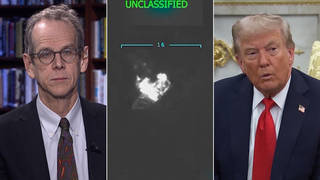

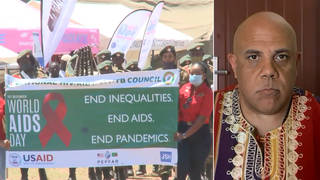
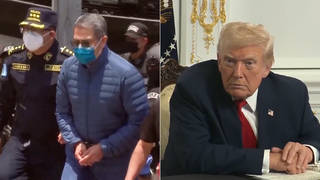





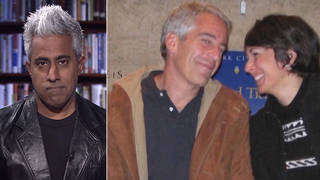
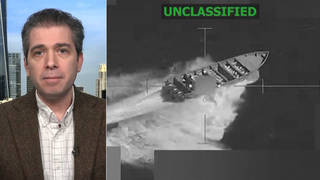
Media Options